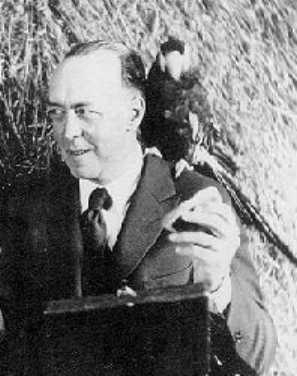Tarzan and the Lost Empire (Tarzan #12)
Book Details
| Title: | Tarzan and the Lost Empire (Tarzan #12) | ||||||||||
| Author: |
| ||||||||||
| Published: | 1928 | ||||||||||
| Publisher: | Consolidated Magazines Corporation | ||||||||||
| Tags: | adventure, fiction, Tarzan (Fictitional character) | ||||||||||
| Description: | Tarzan and a young German, working independently, find a lost remnant of the Roman Empire hidden in the mountains of Africa. This novel is notable for the introduction of Nkima, who serves as Tarzan's monkey companion in it and a number of later Tarzan stories. It also reintroduces Muviro, first seen in Tarzan and the Golden Lion, as sub-chief of Tarzan's Waziri warriors. [Suggest a different description.] |
||||||||||
| Downloads: | 270 | ||||||||||
| Pages: | 155  |
Author Bio for Burroughs, Edgar Rice

Edgar Rice Burroughs (September 1, 1875 – March 19, 1950) was an American writer best known for his creations of the jungle hero Tarzan and the heroic Mars adventurer John Carter, although he produced works in many genres.
Aiming his work at the pulps, Burroughs had his first story, Under the Moons of Mars, serialized by Frank Munsey in the February to July 1912 issues of The All-Story—under the name "Norman Bean" to protect his reputation. Under the Moons of Mars inaugurated the Barsoom series and earned Burroughs US$400 (over $10,000 today). It was first published as a book by A. C. McClurg of Chicago in 1917, entitled A Princess of Mars, after three Barsoom sequels had appeared as serials, and McClurg had published the first four serial Tarzan novels as books.
Burroughs soon took up writing full-time and by the time the run of Under the Moons of Mars had finished he had completed two novels, including Tarzan of the Apes, published from October 1912 and one of his most successful series.
Burroughs also wrote popular science fiction and fantasy stories involving Earthly adventurers transported to various planets (notably Barsoom, Burroughs's fictional name for Mars, and Amtor, his fictional name for Venus), lost islands, and into the interior of the hollow earth in his Pellucidar stories, as well as westerns and historical romances. Along with All-Story, many of his stories were published in The Argosy magazine.
Tarzan was a cultural sensation when introduced. Burroughs was determined to capitalize on Tarzan's popularity in every way possible. He planned to exploit Tarzan through several different media including a syndicated Tarzan comic strip, movies and merchandise. Experts in the field advised against this course of action, stating that the different media would just end up competing against each other. Burroughs went ahead, however, and proved the experts wrong – the public wanted Tarzan in whatever fashion he was offered. Tarzan remains one of the most successful fictional characters to this day and is a cultural icon.
In either 1915 or 1919, Burroughs purchased a large ranch north of Los Angeles, California, which he named "Tarzana." The citizens of the community that sprang up around the ranch voted to adopt that name when their community, Tarzana, California was formed in 1927. Also, the unincorporated community of Tarzan, Texas, was formally named in 1927 when the US Postal Service accepted the name, reputedly coming from the popularity of the first (silent) Tarzan of the Apes film, starring Elmo Lincoln, and an early "Tarzan" comic strip.
In 1923 Burroughs set up his own company, Edgar Rice Burroughs, Inc., and began printing his own books through the 1930s.--Wikipedia.
Available Formats
No book directory. Upload has not been completed.This book is in the public domain in Canada, and is made available to you DRM-free. You may do whatever you like with this book, but mostly we hope you will read it.
Here at FadedPage and our companion site Distributed Proofreaders Canada, we pride ourselves on producing the best ebooks you can find. Please tell us about any errors you have found in this book, or in the information on this page about this book.